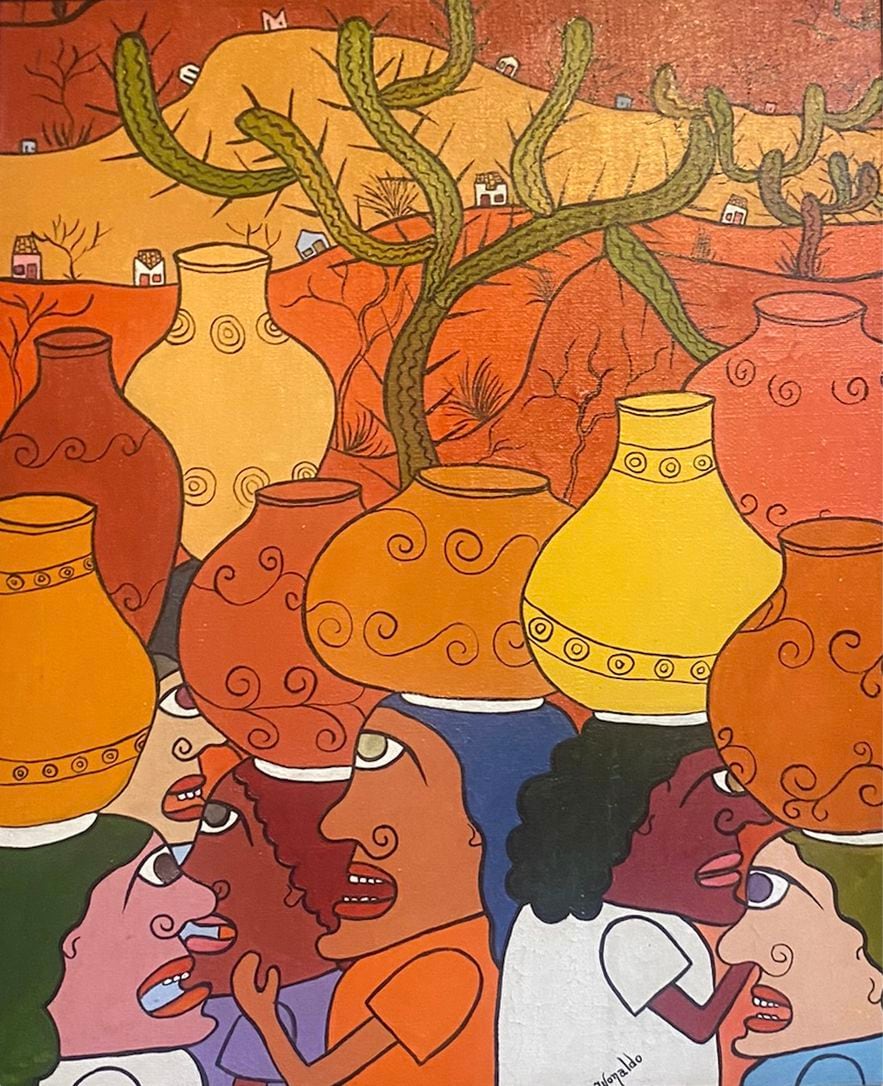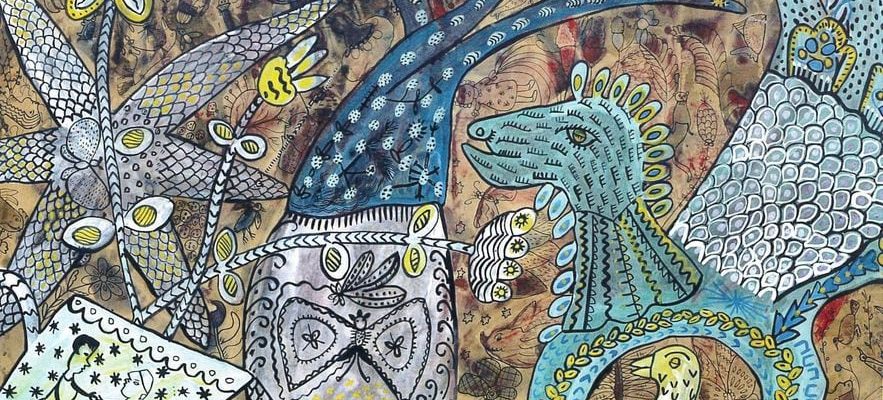In our European imagination, Brazilian culture often refers to a colorful universe. And it’s not the exhibition Brazil, identities, presented at the Lodève museum (Hérault) until April 21, which will contradict this somewhat easy shortcut: it is a real chromatic fireworks display! Yvonne Papin-Drastik, the mistress of the place, brings together the works of around fifty Brazilian artists of the 20th century labeled “primitive”, even “naive”, but whose common point would rather be to be self-taught from popular culture which were formed on the fringes of an official art inherited from colonialism. The pieces – mostly paintings – come from a single collection of which nothing will be known, its holder wishing to remain anonymous, except that it has very rarely been shown in the West. For Yvonne Papin-Drastik, it contributes to “reflecting the multiple identity of an extraordinary country, through the diversity of free and inventive art”.
Women, who represent almost half of the selection, have a special place there, like Silvia de Leon Chalreo (1905-1987), a strong-mouthed character who co-founded the first feminist newspaper in Rio de Janeiro , before capturing the daily life of his compatriots in the favelas, at the beach or at the funfair, with a multitude of small, barely sketched silhouettes. Or the pious Isabel de Jesus (born in 1938), a nurse who entered painting as well as religion, who, using a fine brush and according to her imagination, populates her gouaches with fantastic figures, very personal expressions of ‘spontaneous art’.
Isabel de Jesus, “Bichos que Deus nao criou (Animals that God did not create)”, 1973.
/ © J.Ardies / Y.Refalo / L.Reis
Although freed from any academic influence, many of these artists, more or less ignored in their beginnings, are present in public collections in Brazil and today benefit, for some, from a spotlight in their country, like Chico da Silva (1922-1985), to whom the Pinacoteca de São Paulo devoted a major monograph in spring 2023. Of indigenous origin, this clog maker suffering from mental disorders established himself as a graffiti artist before his time by covering imaginary birds and dragons on the walls of fishermen’s houses. Discovered by chance by a Swiss painter passing through the Nordeste, he was exhibited in Geneva and Lausanne, before receiving an honorable mention at the 1966 Venice Biennale, which made him the most sought-after artist in his country.

Ivonaldo Veloso de Melo, known as Ivonaldo, “Feira de Caruaru (Caruaru Market)”, 1969.
/ © Lodève Museum
Like the improbable Chico da Silva before him, Ivonaldo Veloso de Melo (1943-2016) made himself widely known in our latitudes. A native of Caruaru, a major center of ceramic production, he was alternately an office worker and salesman when he began painting in 1966. At the age of 30, he participated in the International Art Fair in Düsseldorf, at the Salon d’art contemporary in Paris and at the Levallois World Fair of Naive Painting, before traveling across Europe, from Amsterdam to Trebinje (Bosnia), from London to Cologne, via Brussels and Florence. His compositions in orange, yellow and brown tones are marked by a burning luminosity, synthesized figures and motifs which bear witness to rural life in Pernambuco. After his return to Brazil in 1980, Ivonaldo’s palette became more muted, but retained the frankness and passion of his line. His works are among the most attractive of the Lodève meeting.
